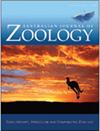利用人造树皮覆盖物调查河漫滩环境中树栖蜥蜴的分布和丰度
IF 1
4区 生物学
Q3 ZOOLOGY
引用次数: 1
摘要
摘要在世界范围内,对树栖蜥蜴,尤其是那些生活在洪水易发环境中的物种的调查很少。我们研究了河漫滩环境中树栖蜥蜴丰度的时空格局和驱动探测率的因素,使用人工树皮覆盖,这是一种非破坏性和成本效益的调查方法。在澳大利亚新南威尔士州南部Murrumbidgee河洪泛区的13个湿地的桉树上,总共安装了112个柔性的闭孔泡沫树皮覆盖物,通过两种淹没频率处理进行分层。在检测到的4种树栖壁虎中,南方大理石纹壁虎(Christinus marmoratus) (n = 41)和树栖壁虎(Gehyra versicolor) (n = 8)局限于murrumbidgee中部地区,而裂缝壁虎(Egernia striolata) (n = 19)局限于murrumbidgee下部地区,并且没有与任何一种壁虎共同出现。在频繁和不频繁淹没处理之间,蜥蜴的平均检出率没有差异,但覆盖物下蜥蜴的丰度在月份之间变化显著。对于所有检测到的蜥蜴物种,蛛形纲动物Holconia murrayensis的存在/缺失是解释蜥蜴发生模式的重要变量,特别是C. marmoratus。人工树皮覆盖是收集洪泛区爬行动物分布、丰度和占用数据的一种有用的调查方法,尽管检出率可能受到月份、捕食者-猎物相互作用和调查努力的影响。采用被动的、非破坏性的爬行动物调查方法将大大提高我们对受干扰事件影响的植被群落物种分布和丰度格局的认识。本文章由计算机程序翻译,如有差异,请以英文原文为准。
Use of artificial bark covers to investigate the distribution and abundance of arboreal lizards in a floodplain environment
Abstract. Arboreal lizards, especially species that inhabit flood-prone environments, have been poorly surveyed worldwide. We examined spatiotemporal patterns in arboreal lizard abundance and factors driving detection rates in floodplain environments using artificial bark covers, a non-destructive and cost-effective survey method. In total, 112 flexible, closed-cell foam bark covers were installed on eucalypt trees in 13 wetlands in the Murrumbidgee River floodplain of southern New South Wales, Australia, stratified by two inundation frequency treatments. Of four arboreal lizard species detected, the southern marbled gecko (Christinus marmoratus) (n = 41) and the tree dtella (Gehyra versicolor) (n = 8) were restricted to the mid-Murrumbidgee region, whereas the crevice skink (Egernia striolata) (n = 19) was restricted to the lower-Murrumbidgee region and did not co-occur with either gecko species. Mean detection rates of lizard species did not differ between frequently and infrequently inundated treatments but their abundance beneath covers varied significantly by month. For all detected lizard species, the presence/absence of the arachnid Holconia murrayensis represented a significant variable in explaining lizard occurrence patterns, particularly that of C. marmoratus. Artificial bark covers are a useful survey method for collecting distribution, abundance, and occupancy data on floodplain reptiles, although detection rates can be affected by the month, predator–prey interactions, and survey effort. Adopting passive, non-destructive reptile survey methods would greatly improve our knowledge of species’ distributions and abundance patterns in vegetation communities subject to disturbance events.
求助全文
通过发布文献求助,成功后即可免费获取论文全文。
去求助
来源期刊
CiteScore
2.40
自引率
0.00%
发文量
12
审稿时长
>12 weeks
期刊介绍:
Australian Journal of Zoology is an international journal publishing contributions on evolutionary, molecular and comparative zoology. The journal focuses on Australasian fauna but also includes high-quality research from any region that has broader practical or theoretical relevance or that demonstrates a conceptual advance to any aspect of zoology. Subject areas include, but are not limited to: anatomy, physiology, molecular biology, genetics, reproductive biology, developmental biology, parasitology, morphology, behaviour, ecology, zoogeography, systematics and evolution.
Australian Journal of Zoology is a valuable resource for professional zoologists, research scientists, resource managers, environmental consultants, students and amateurs interested in any aspect of the scientific study of animals.
Australian Journal of Zoology is published with the endorsement of the Commonwealth Scientific and Industrial Research Organisation (CSIRO) and the Australian Academy of Science.

 求助内容:
求助内容: 应助结果提醒方式:
应助结果提醒方式:


